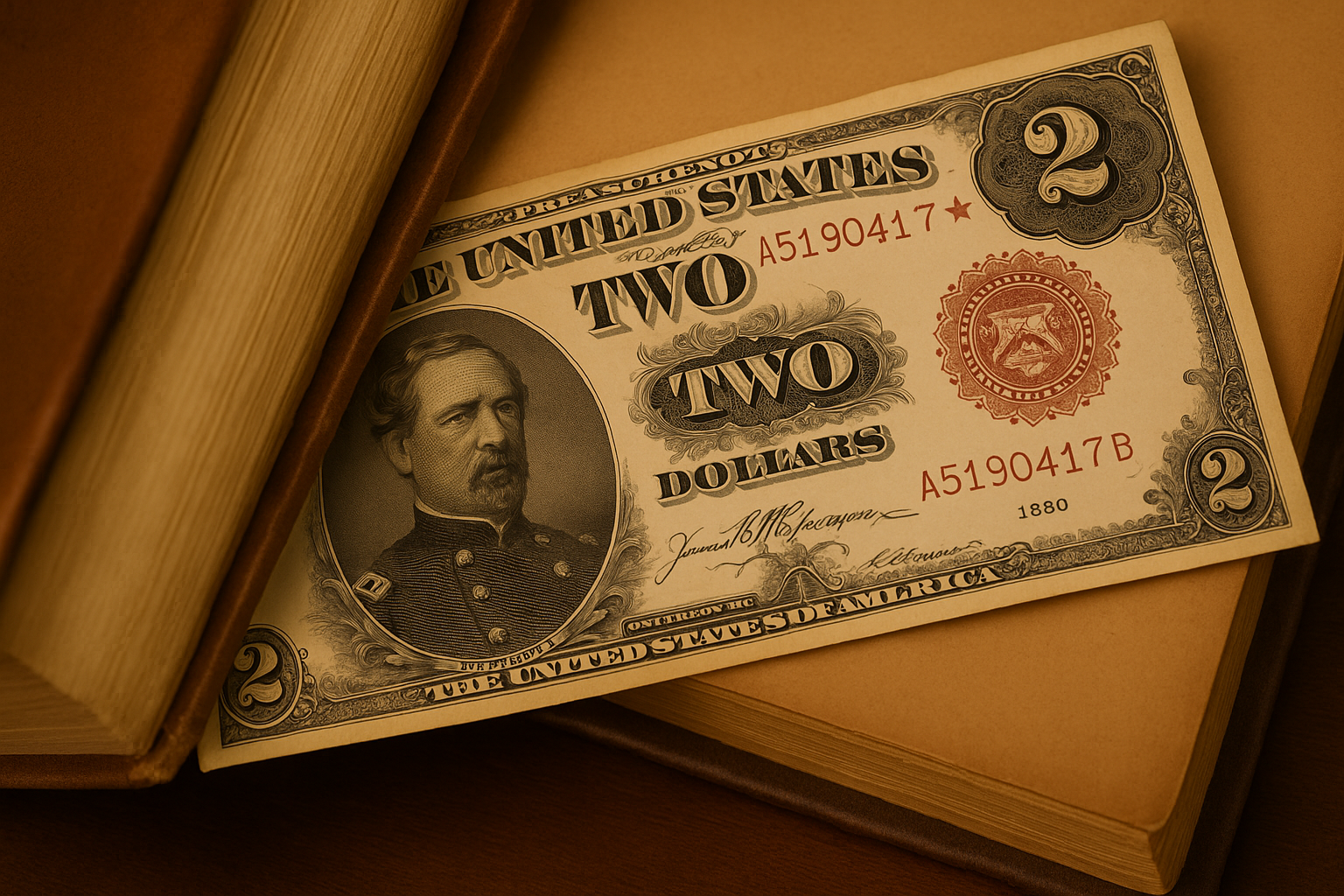While browsing through a collection of antique law books inherited from his grandfather, a collector in Pennsylvania uncovered something unexpected — an 1890 $2 Treasury Note tucked between the pages.
Preserved in remarkable condition, the note later sold at auction for $24,500, making headlines in the numismatic world and reigniting curiosity about the value and rarity of $2 bills.
Why $2 Bills Are So Misunderstood
Many Americans consider the $2 bill an oddity or novelty, but its roots go deep into American monetary history. First issued in 1862, the denomination has gone through various design changes, including large-size notes, Legal Tender Notes, and Treasury Notes.
Though still printed today in small numbers, certain $2 bills can be worth thousands, depending on year, series, signatures, and condition.
The 1890 Treasury Note and Its Significance
The most notable $2 bills in collecting circles are from the 1890 Treasury Note series, known for their stunning detail, bold artwork, and red seal. The note found in this case featured General James McPherson, a Civil War hero, and was part of a short-lived series with low surviving numbers.
Key identifiers of this rare $2 bill include:
- Large-size paper format (7.375 x 3.125 inches)
- Red seal and serial number
- A portrait of Major General James B. McPherson
- Engraved by the Bureau of Engraving and Printing
$2 Bill Value Guide by Series
Not all $2 bills are rare or valuable, but here’s a general breakdown by type:
| Series | Type | Estimated Value (Circulated) |
|---|---|---|
| 1862–1917 | Legal Tender Notes | $500 – $3,000+ |
| 1890 | Treasury Note | $2,000 – $25,000+ |
| 1928 | Small-size Legal Tender | $10 – $150 |
| 1953/1963 | Small-size Legal Tender | $3 – $15 |
| 1976–2003 | Federal Reserve Notes | Face value to $5 |
| 2013 | Modern Series | Face value, unless fancy serial |
How to Know If Your $2 Bill Is Valuable
To determine whether your $2 bill has collector value, examine the following:
- Series year and seal color
- Serial number pattern (low numbers or stars increase value)
- Condition (uncirculated bills command a premium)
- Printing errors or misalignments
- Signatures and issuing bank (for older series)
For definitive valuation, consider professional appraisal or grading from PMG or PCGS Currency.
Why Collectors Love the $2 Bill
The $2 bill has always stood apart — from Thomas Jefferson’s stoic portrait to the reverse’s depiction of the signing of the Declaration of Independence. Collectors are drawn to it for its uniqueness, historical roots, and the thrill of uncovering a rare variety among everyday paper money.
Whether it’s a Civil War-era Treasury Note or a 1976 bicentennial novelty, the $2 bill offers a fascinating cross-section of U.S. history, printing art, and monetary evolution.
Conclusion
The rare 1890 $2 Treasury Note pulled from a forgotten bookcase shows how hidden treasures often rest within our reach. While most $2 bills aren’t rare, knowing which varieties carry historical and collector weight can turn a simple piece of currency into a four- or five-figure asset. If you’ve got a stash of old bills at home, it may be time to take a closer look — one of them could be worth much more than two dollars.
FAQs
What’s the rarest $2 bill?
Among the rarest are 1890 Treasury Notes and 1928-B Legal Tender Notes, especially in uncirculated condition or with star serials.
Are $2 bills still being printed?
Yes, the U.S. Bureau of Engraving and Printing still produces $2 bills, although in smaller quantities than other denominations.
How do I sell a rare $2 bill?
For high-value notes, it’s best to get it graded, then list it through Heritage Auctions, eBay, or a currency dealer.

